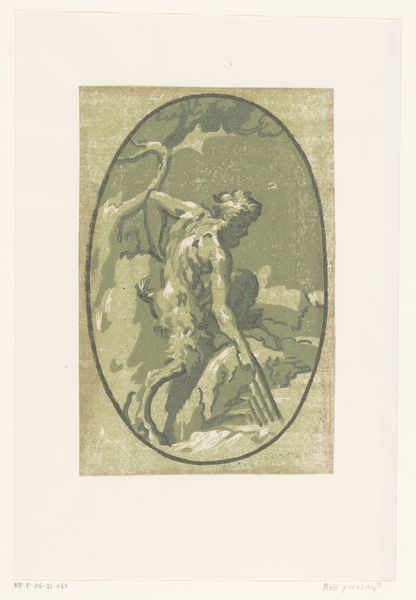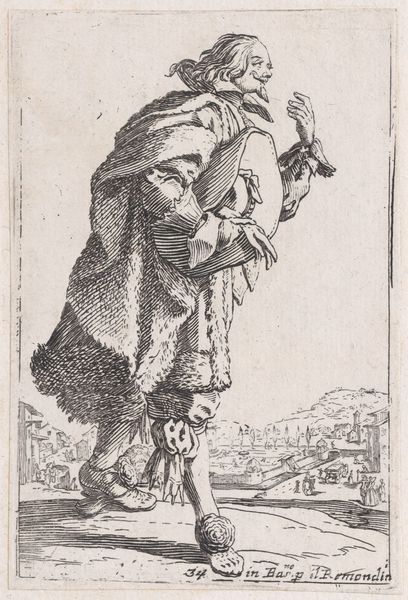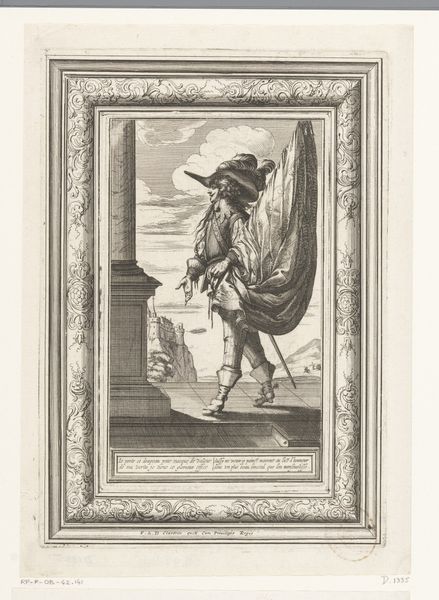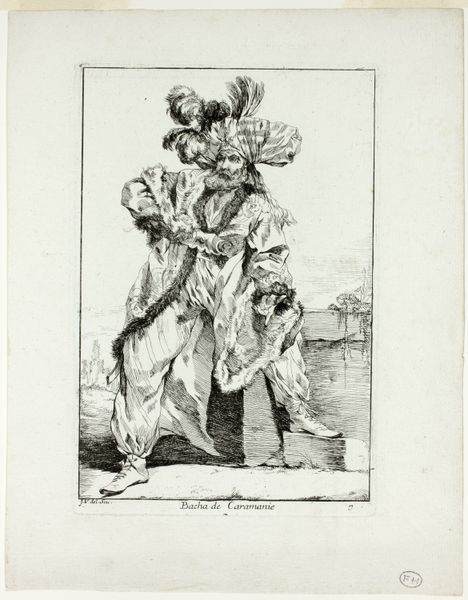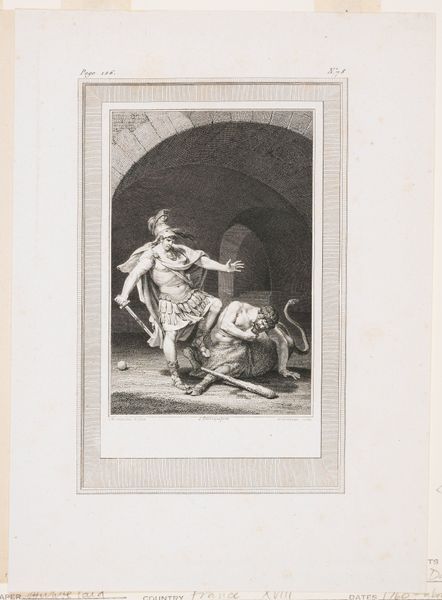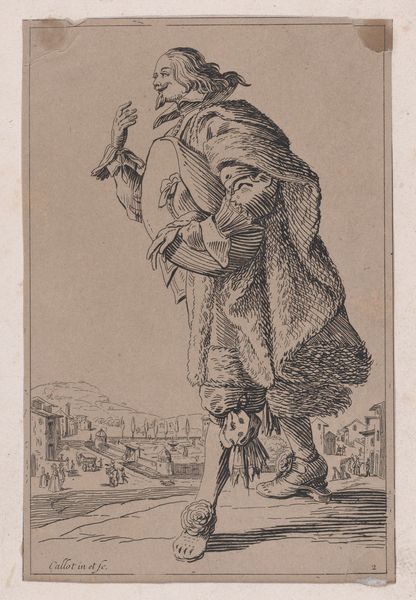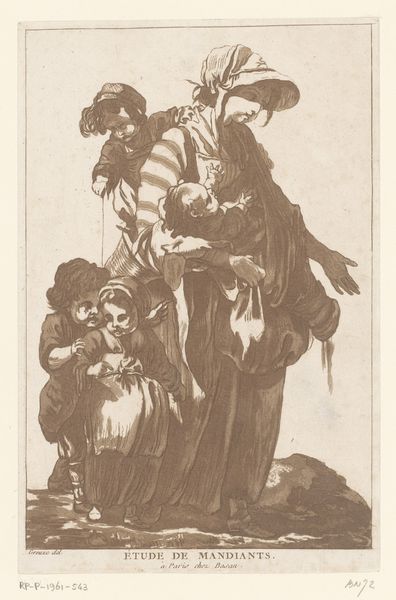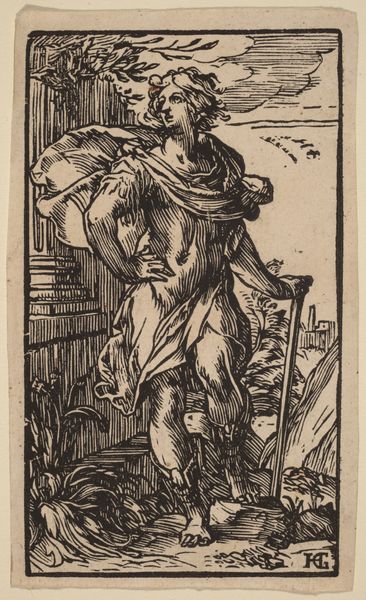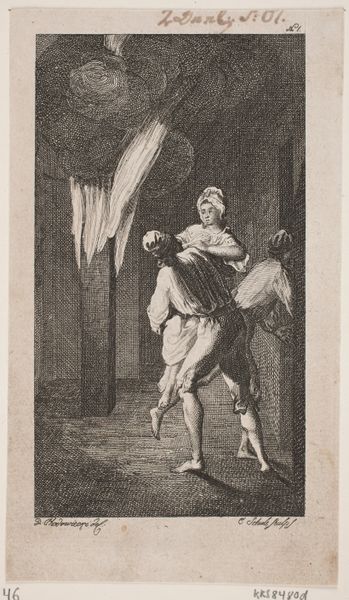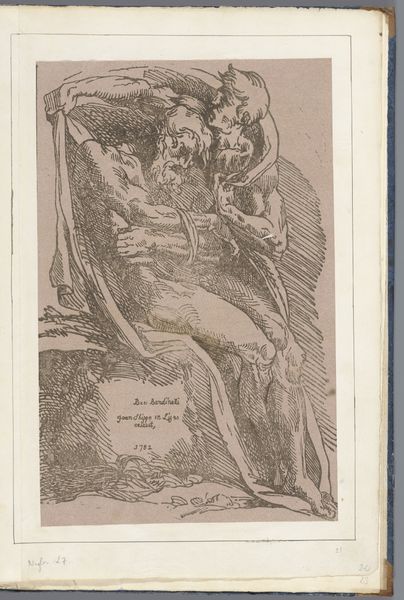
drawing, print, engraving
#
portrait
#
drawing
#
baroque
# print
#
figuration
#
history-painting
#
engraving
Dimensions: Sheet: 6 1/4 × 3 1/8 in. (15.9 × 7.9 cm)
Copyright: Public Domain
Editor: So, here we have Anton Maria Zanetti the Elder’s "Saint James the Greater," an engraving from 1723. It looks like Saint James is mid-stride, maybe giving direction? There's a stark quality to the image; the lines feel almost etched. I'm curious – what catches your eye about this piece? Curator: Well, immediately, I consider the means of its production: engraving. The labor-intensive process of carving those lines into a metal plate, the repetitive action of creating the print, points to a relationship with craft often dismissed in 'high art'. How does the very act of making, the materiality of the print itself, inform its meaning? Editor: That’s a great point. I was so focused on the image; I didn't think about the labor. Does the choice of engraving – this detailed, almost mechanical process – influence how we see Saint James, perhaps diminishing his...grandeur? Curator: Exactly! Think about the social context. Prints like this were often made for wider distribution, for a market. Is this saint being commodified? What does it mean to mass-produce a religious icon in the 18th century? Is he rendered accessible or somehow lessened? Consider, too, the paper – where did it come from, who made it, and how does that affect the work’s value? Editor: Wow, I hadn't considered the economic factors at play. So it’s not just about what Saint James represents, but also about the conditions and processes that allowed this image to exist. Curator: Precisely. Examining the material and production exposes layers of meaning often hidden by focusing solely on subject matter. This engraving connects us to the specific labor, resources, and consumption patterns of its time. Editor: I will definitely view art with more attention to how it's made, who made it, and how accessible it might have been to audiences at the time. It adds so much more context! Curator: Absolutely! By acknowledging those factors, we get a much fuller picture of the artwork’s purpose.
Comments
No comments
Be the first to comment and join the conversation on the ultimate creative platform.
